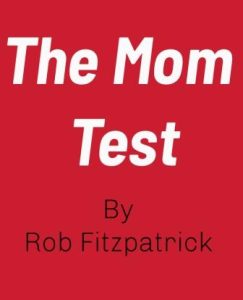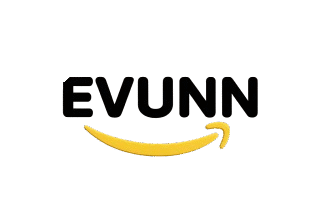Testing Business Ideas Summary
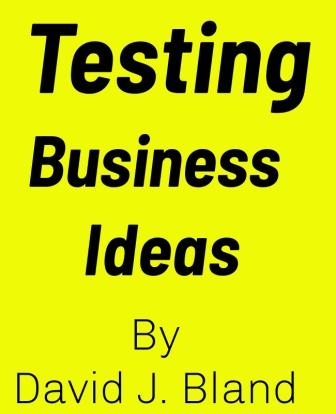
Validation turns ideas into valuable assets
Why We Recommend this Book
Most people assume that a great idea automatically leads to a successful business—but that’s a costly mistake.
The truth? Ideas don’t fail—untested assumptions do. That’s why Testing Business Ideas is a must-read.
It doesn’t just tell you to validate your idea—it shows you how, step by step giving you a hands-on playbook with 44 proven experiments to validate your idea before you waste time and money.
Testing Business Ideas
Testing Business Ideas Summary
Is your copy of “Testing Business Ideas“just sitting on the shelf collecting dust? No time to read it? We get it—life’s busy, and digging into a full book isn’t always easy.
But here’s the thing: knowing how to test and validate your ideas could save you time, money, and headaches. Don’t let a great idea flop because you didn’t test it first!
Instead of missing out completely, grab the key takeaways from this summary. It’s quick, actionable, and gives you exactly what you need to get started.
And hey, if you’re curious for more, you can always go back to the full book for extra insights!
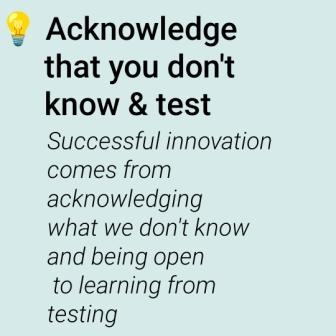
Introduction
Ready to turn your big ideas into reality without wasting time or money? If you’ve ever dreamed of launching a business but felt stuck, unsure whether your idea will actually work, “Testing Business Ideas” is the ultimate game-changer!
This book isn’t just theory—it’s packed with 44 actionable experiments designed to help you quickly test, validate, and tweak your ideas before going all in.
Think of it as your business GPS, guiding you step by step to avoid expensive mistakes and focus on what really matters: building something people truly want.
Let’s roll!
Click on the Tabs Below to Read Testing Business Ideas Summary
“Testing Business Ideas” is a practical guide that teaches entrepreneurs and innovators how to systematically test and validate their business ideas through a series of structured experiments, helping them reduce risk and increase the chances of success.
The main idea of this book is before you dive into launching a business or creating a product, you should test your assumptions—those things you believe are true about your business idea.
For example, you might think that people need your product or that they’ll pay a certain amount for it.
Instead of guessing, this book shows you how to run simple, practical experiments to find out if your assumptions are correct.
Who should read this book?
This book is great for entrepreneurs, innovators, or anyone with a business idea, whether you’re starting a new company or launching a new product within an existing business.
It’s especially useful for people who want to minimize risk and make sure their ideas are solid before going all in.
In “Testing Business Ideas”, David J. Bland and Alexander Osterwalder created a hands-on guide designed to help entrepreneurs and business leaders validate their business ideas through systematic testing.
Here’s a detailed chapter-by-chapter summary of Testing Business Ideas:
Chapter 1: Why Testing?
Summary: This chapter sets the stage by explaining why testing your business ideas is crucial.
The authors argue that many startups and new business ventures fail because they don’t validate their ideas before going all-in.
The goal of this book is to help you avoid that trap by teaching you how to test your assumptions before making big investments.
Examples: This chapter references real-world examples of companies that succeeded or failed based on whether they tested their ideas.
For instance, a company that assumed people wanted a particular product failed because they didn’t first check if there was a real demand for their product.
Takeaway: Before you spend time and money on a business idea, you need to know if it’s something people actually want and are willing to pay for.
Chapter 2: Getting Started with Testing
Summary: In this chapter, the book dives into how to begin testing your business ideas. It introduces the concept of an “Assumption Map,” which helps you identify and list out all the assumptions you have about your business idea.
These assumptions could be about who your customers are, what they need, how much they’re willing to pay, or how you’ll reach them.
Examples: Imagine you want to start a new fitness app. You might assume that people want personalized workout plans and are willing to pay for them.
The Assumption Map helps you lay out these assumptions so you can start thinking about how to test them.
Takeaway: Start by identifying all the key assumptions about your business idea. This will help you figure out what you need to test first.
Chapter 3: Prioritize Your Assumptions
Summary: This chapter focuses on prioritizing the assumptions you’ve identified.
Not all assumptions are equally important—some are “high risk,” meaning if they’re wrong, your whole business idea could fail.
The book introduces a simple method to rank these assumptions based on their level of risk and how easy they are to test.
Examples: Using the fitness app example, a high-risk assumption might be that people are willing to pay $10 a month for personalized workout plans.
If this assumption is wrong, your business model could fall apart, so you need to test this first.
Takeaway: Focus on testing the riskiest assumptions first because they have the biggest impact on whether your idea will succeed or fail.
Chapter 4: Select the Right Experiment
Summary: Once you’ve prioritized your assumptions, the next step is to choose the right experiment to test them.
The book provides a list of 44 different types of experiments you can run, ranging from simple interviews with potential customers to more complex prototypes and landing pages. Each experiment is designed to test specific assumptions.
Examples: For the fitness app, you might start with customer interviews to understand if people are really interested in personalized workout plans.
If that assumption holds up, you might create a basic landing page offering these plans to see if people are willing to sign up and pay for them.
Takeaway: There are many ways to test a business idea. Choose the experiment that gives you the most useful feedback with the least effort.
Here is a summary of the 44 experiments to test business ideas
These experiments are divided into various categories to help entrepreneurs and innovators validate different aspects of their business ideas.
They provide a comprehensive toolkit for testing different aspects of a business idea, from understanding customer needs to scaling operations efficiently.
They are as follows:
A. Discovery Experiments (Understand Your Customers)
These experiments are designed to help you understand your customers, their needs, and behaviours.
1. Customer Interviews – Direct conversations with potential customers to understand their needs, challenges, and motivations.
2. Problem Interviews – Focus on understanding the specific problems your customers face.
3. Customer Surveys – Collect quantitative data from a large number of customers to validate assumptions.
4. Jobs-to-be-Done Interviews – Identify the “jobs” customers are trying to get done and how your solution fits.
5. Day-in-the-Life Testing – Follow customers through their daily routines to uncover unmet needs.
B. Validation Experiments (Test Demand and Interest)
These experiments help you gauge the interest and demand for your idea.
6. Landing Page – Create a simple webpage to measure interest in your product or service.
7. A/B Testing – Test two versions of a webpage or feature to see which performs better.
8. Ad Campaigns– Use online ads to measure interest and gather customer data.
9. Pre-Sales – Offer your product for sale before it’s fully built to check demand.
10. Explainer Video – Create a short video that explains your concept and see how people respond.
11. Crowdfunding – Use platforms like Kickstarter to validate demand and raise funds.
12. Fake Door – Create a webpage or button for a feature that doesn’t exist yet to see if people click.
13. Concierge – Manually provide a service to validate demand before automating it.
14. Wizard of Oz – Make your product appear fully functional while manually performing the tasks behind the scenes to gauge customer interest.
15. Feature Stub – Include a “coming soon” feature in your product to see if users show interest.
16. Innovator’s Roadmap – Create a visual map of your idea and its journey to validate its feasibility and customer interest.
C. MVP (Minimum Viable Product) Experiments
These experiments help you build and test a minimal version of your product to gather maximum validated learning with the least effort.
17. Single Feature MVP– Develop and test a single feature to validate its value to customers.
18. Piecemeal MVP –
Combine existing tools and services to create a working version of your product.
19. Pilot – Run a small-scale version of your product to test it in the real world.
20. Prototype – Build a basic, often non-functional, version of your product to get feedback.
21. Live Product – Launch a stripped-down version of your product in a live environment to test and learn.
22. Service Blueprinting – Map out the service process and test each component to ensure it meets customer needs.
D. Efficiency Experiments (Test Operational Feasibility)
These experiments help you test the operational and financial feasibility of your business idea.
23. Cost Testing – Experiment with different cost structures to find the most efficient way to deliver your product or service.
24. Revenue Testing – Test different pricing models and revenue streams to see what works best.
25. Channel Testing – Test different distribution and sales channels to see which ones are most effective.
26. Supply Chain Testing – Experiment with different suppliers and logistics to optimize your supply chain.
27. Outsource MVP – Outsource parts of your product development to test the feasibility and efficiency of using third-party services.
28. Service Design Jam – Collaborate with others to rapidly prototype and test service designs.
E. Validation (Go-to-Market) Experiments
These experiments focus on testing the effectiveness of your marketing and sales strategies.
29. Smoke Test – Use a marketing campaign to test customer interest before the product is fully developed.
30. Launch Event – Organize an event to gauge interest and gather feedback on your product.
31. Trade Show – Present your product at a trade show to gather customer feedback and measure interest.
32. Referral Program – Test a referral program to see if customers are willing to recommend your product to others.
33. Content Marketing – Create and distribute content to test how it resonates with your target audience.
34.Influencer Marketing – Partner with influencers to test how their endorsement affects customer interest.
F. Growth Experiments (Scale Your Business)
These experiments help you test how to scale your business effectively.
35. Viral Loop – Test strategies to encourage customers to spread the word about your product.
36. Network Effects – Experiment with features that become more valuable as more people use your product.
37. Customer Retention – Test different strategies to keep customers engaged and returning to your product.
38. Upsell/Cross-Sell – Experiment with additional offerings to see if customers are willing to spend more.
39. Partnerships – Test strategic partnerships to see how they impact growth and scalability.
40. Freemium Model – Offer a free version of your product to attract users and then upsell them to a paid version.
41. Expansion – Test entering new markets or customer segments to see how your product performs.
42. Automation – Experiment with automating parts of your business to increase efficiency as you scale.
G. Efficiency (Execution) Experiments
These focus on optimizing and streamlining the execution of your business model.
43. Process Improvement – Test different ways to make your internal processes more efficient.
44. KPI Dashboards – Create dashboards to track key performance indicators and make data-driven decisions.
Chapter 5: Measure Your Results
Summary: After running your experiments, it’s important to measure and analyze the results.
This chapter explains how to track your progress using “metrics” or key numbers that tell you whether your idea is on the right track.
These metrics could include things like the number of people who sign up for a trial, the percentage of users who pay for your product, or how much time customers spend using your app.
Examples: If your fitness app landing page gets a lot of visitors but very few sign-ups, this might tell you that people are interested in the idea but not enough to pay for it.
You’d then need to dig deeper to understand why.
Takeaway: Keep track of the numbers that matter most to your business. These will help you understand whether your idea is working or if you need to make changes.
Chapter 6: Learn and Decide
Summary: This chapter is about making decisions based on what you’ve learned from your experiments.
After gathering data, you need to decide whether to “pivot” (make significant changes to your idea) or “persevere” (continue on the current path).
The book emphasizes that it’s okay to change direction if your tests show that your original idea isn’t working.
Examples: If your fitness app isn’t getting enough paying users, you might pivot by offering a freemium model instead of a paid subscription, where basic features are free but users pay for premium content.
Takeaway: Use the results of your experiments to make informed decisions.
Be ready to change course if the data suggests your original idea isn’t viable.
Chapter 7: Business Models
Summary: This chapter expands on how your business idea fits into a broader “business model,” which is the plan for how your business will make money.
It walks you through testing different parts of your business model, such as your revenue streams, cost structure, and distribution channels.
Examples: Continuing with the fitness app example, you might test different pricing strategies (like a one-time purchase versus a subscription model) or explore various ways to reach your customers (like through social media ads or partnerships with gyms).
Takeaway: Your business model is like a puzzle. Each piece (how you make money, who your customers are, etc.) needs to fit together, and you should test each one to ensure it works.
Chapter 8: Advanced Experiments
Summary: Once you’ve mastered the basics of testing, this chapter introduces more advanced experiments.
These are often more complex and require more resources, but they can provide deeper insights.
Examples include A/B testing, where you compare two versions of something (like two different landing pages) to see which performs better.
Examples: For the fitness app, you might run an A/B test on your website’s sign-up page to see if changing the headline or button color increases the number of sign-ups.
Takeaway: As you gain confidence in testing, you can start using more advanced methods to fine-tune your business idea and improve your chances of success.
Chapter 9: Team and Culture
Summary: This chapter emphasizes the importance of having the right team and culture to support testing and innovation.
A team that embraces experimentation and isn’t afraid to fail is more likely to succeed in developing a viable business idea.
Examples: Companies like Google encourage a culture of testing and learning by giving employees the freedom to experiment and learn from their mistakes.
Takeaway: A supportive team and culture are critical to successful testing.
Everyone should be on board with the idea that it’s okay to fail as long as you learn from it.
Chapter 10: Keep Testing and Learning
Summary: The final chapter encourages continuous testing and learning.
Even after you’ve launched your business, you should keep testing new ideas and improving your product or service.
The business world is always changing, and the best companies are those that keep adapting.
Examples: Companies like Amazon and Netflix constantly test new features and business models to stay ahead of the competition.
Takeaway: Testing isn’t something you do just once. To stay successful, you need to keep learning, adapting, and improving your business over time.
In conclusion, “Testing Business Ideas” is all about reducing the risk of failure by making sure your business idea is solid before you go all-in.
By systematically testing your assumptions and learning from the results, you can build a business that’s more likely to succeed in the real world.
Here are actionable steps you should take starting from right now:
1. Validate Your Assumptions
Lesson: Don’t assume you know what customers want. Validate your assumptions by testing them early and often.
Action Point: Identify the most critical assumptions about your business idea (e.g., customer demand, pricing, features) and prioritize them for testing.
Use simple experiments like surveys or interviews to gather initial feedback.
2. Start Small with Experiments
Lesson: Begin with small, low-cost experiments to test the viability of your idea before scaling up.
Action Point: Design a minimum viable product (MVP) or a simple prototype that allows you to test your idea with real customers.
For example, create a basic landing page to gauge interest or offer a limited-time trial to see if people are willing to pay.
3. Focus on High-Risk Assumptions
Lesson: Some assumptions are more critical to your business’s success than others. Focus on testing the riskiest ones first.
Action Point: Map out all your assumptions and rank them based on their level of risk.
Start by testing the assumptions that, if proven wrong, would have the biggest negative impact on your business.
4. Use Metrics to Measure Success
Lesson: Use clear, objective metrics to determine if your experiments are successful.
Data-driven decisions reduce the risk of relying on gut feelings.
Action Point: Define key performance indicators (KPIs) for each experiment.
For instance, track the conversion rate of visitors to sign-ups on your landing page or the number of repeat customers after a product launch.
5. Learn and Pivot When Necessary
Lesson: Be open to learning from your experiments, and don’t be afraid to pivot if the data shows your idea isn’t working.
Action Point: After each experiment, analyze the results and decide whether to persevere with your current approach, pivot to a new strategy, or abandon the idea altogether.
For example, if customer feedback indicates a different feature is more valuable, consider shifting your focus.
6. Keep Testing Continuously
Lesson: Testing is an ongoing process, not a one-time event. Continuous experimentation and learning are key to long-term success.
Action Point: Build a culture of continuous testing and improvement within your team or organization.
Regularly run new experiments to explore opportunities, refine your offerings, and stay ahead of market changes.
7. Involve Your Team
Lesson: A collaborative, experimentation-driven culture is essential for successful testing and innovation.
Action Point: Engage your team in the testing process. Encourage open discussions, brainstorming sessions, and collective problem-solving to foster a culture of innovation.
8. Adapt Your Business Model
Lesson: Your business model should evolve based on what you learn from testing.
Action Point: Regularly revisit and refine your business model canvas (e.g., value propositions, customer segments, revenue streams) as you gather new insights from your experiments.
This ensures your business model remains aligned with market demands.
9. Don’t Fear Failure
Lesson: Failure is a natural part of the testing process. Each failed experiment brings you closer to finding a successful solution.
Action Point: Embrace failure as a learning opportunity.
Document what didn’t work and why, and use those insights to improve future experiments.
10. Stay Customer-Centric
Lesson: Always keep the customer at the centre of your testing and business development efforts.
Action Point: Continuously gather customer feedback through surveys, interviews, and usability tests.
Use this feedback to refine your product or service and ensure it meets customer needs.
The key to success in business is not just having a great idea but systematically testing and refining that idea to ensure it meets real customer needs.
By applying these lessons and action points, you can significantly increase your chances of building a successful, sustainable business.
Here are other interesting and recommended reading list related to the themes explored in “Testing Business Ideas, for further reading:
- Masters of Scale podcast summary: How AirBNB was handcrafted by Chesky & Co.
- The Lean Startup by Eric Ries summary
- Book summary of The Mom Test: How to talk to customers & learn if your business is a good idea when everyone is lying to you by Bob Fitzpatrick
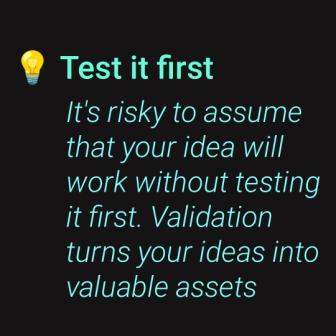
David J. Bland
Background: David J. Bland is a renowned innovation expert, entrepreneur, and founder of Precoil, a consultancy that helps companies test and validate new business ideas.
He has extensive experience working with startups as well as established companies, guiding them through the process of creating and scaling innovative products.
Bland’s work focuses on lean startup methodologies, design thinking, and business model innovation.
Career Highlights: Prior to founding Precoil, David worked at big companies like HP and enterprise startups.
His hands-on experience in these environments gave him unique insights into the challenges and opportunities of innovation in different contexts.
Besides co-authoring “Testing Business Ideas,” David frequently speaks at conferences, writes articles on innovation, and mentors startups through various accelerators.
Alexander Osterwalder
Background: Alexander Osterwalder is a Swiss business theorist, entrepreneur, and co-founder of Strategyzer, a company that provides tools and services for innovation and business model development.
He holds a PhD in Management Information Systems from the University of Lausanne, where he researched business models.
Career Highlights: Alexander is best known for his work on the Business Model Canvas, a strategic management tool that helps organizations develop and visualize their business models.
His previous book, “Business Model Generation,” became a bestseller and is widely used in business schools and organizations around the world.
Osterwalder is a sought-after speaker, consultant, and thought leader in the fields of business model innovation, strategy, and entrepreneurship.
He has collaborated with numerous Fortune 500 companies and startups to help them innovate and grow.
Title: “Testing Business Ideas: A Field Guide for Rapid Experimentation”
Authors: David J. Bland and Alexander Osterwalder
Publication Date: November 5, 2019
Publisher: Wiley
Format: The book is available in hardcover, paperback, ebook, and audiobook formats.
Page Count: 376 pages
ISBN: 978-1119551447
Language: English
Overview of the Book:
“Testing Business Ideas” is a practical guide designed to help entrepreneurs and innovators validate their business ideas through systematic experimentation.
It provides a structured approach to identifying, prioritizing, and testing the assumptions underlying any new business idea.
It also builds on the concepts of lean startup, design thinking, and the Business Model Canvas, offering readers over 44 different experiments they can use to gather evidence and reduce risk before fully committing to a new venture.
The book is visually engaging, with numerous illustrations, diagrams, and case studies that make complex concepts easy to understand and apply.
It’s aimed at a broad audience, including startups, corporate innovators, and anyone involved in product development or business strategy.

Course Curriculum
Test your Knowledge of Testing Business Ideas
-
Start your Testing Business Ideas Quiz
Evunn Concept
Testing Business Ideas and The Lean Startup by Eric Ries share a common concept of validating business ideas early to avoid wasting time and money on something that won’t work.
The Lean Startup introduces the Build-Measure-Learn cycle, which encourages entrepreneurs to launch small experiments, gather feedback, and improve their ideas based on real customer data.
Testing Business Ideas takes this concept further by providing 44 specific experiments that entrepreneurs can use to test assumptions before building a full product.
Your Next Read
